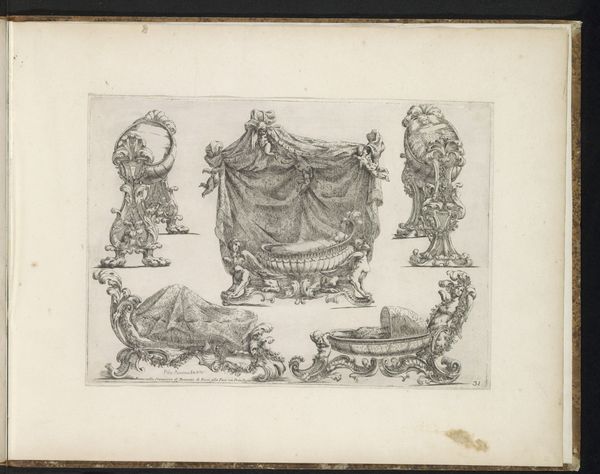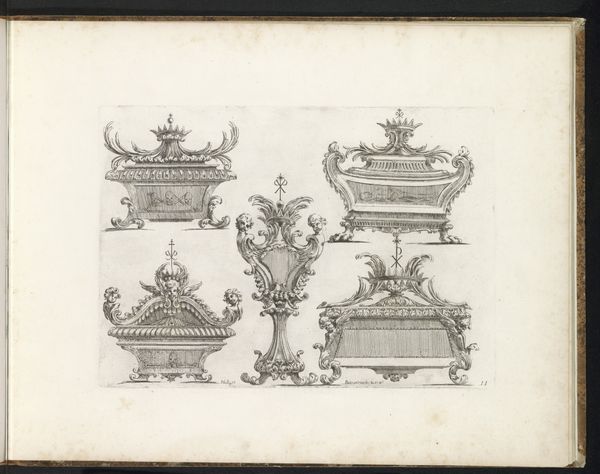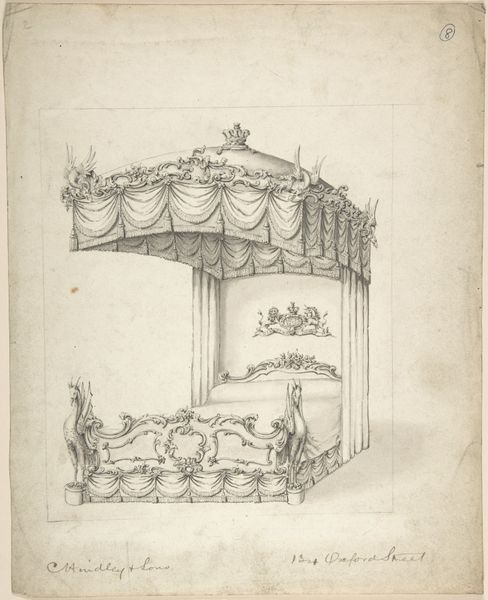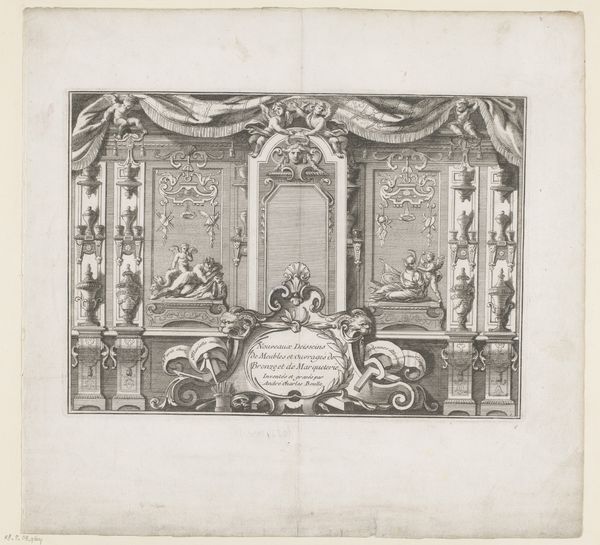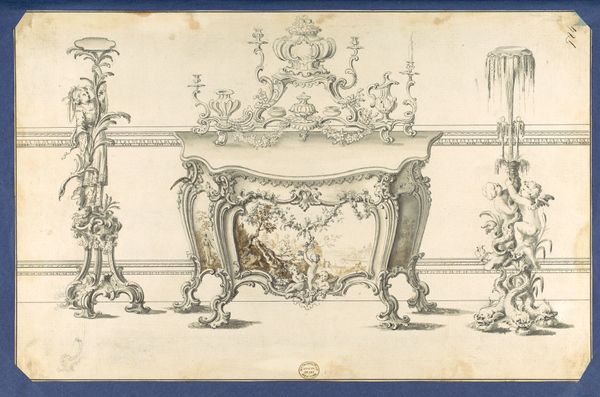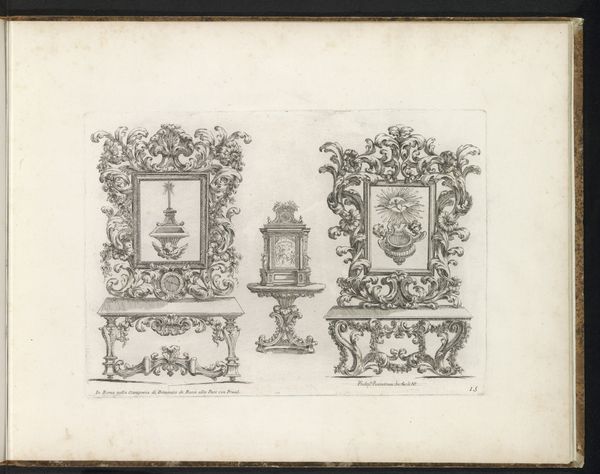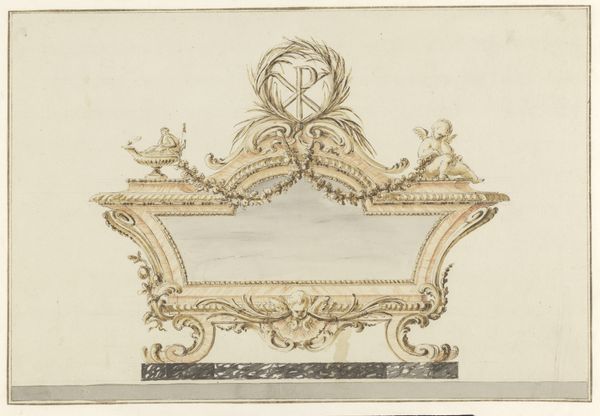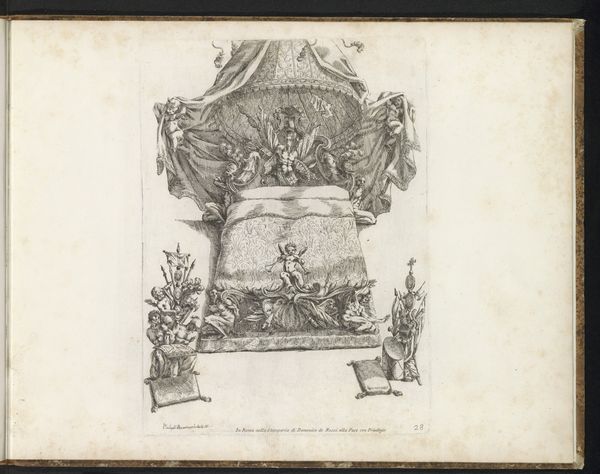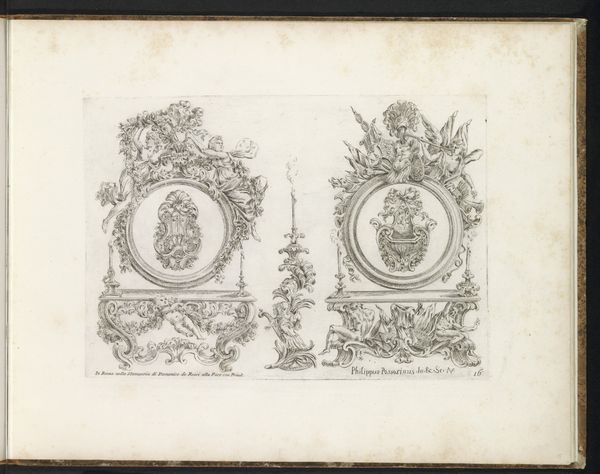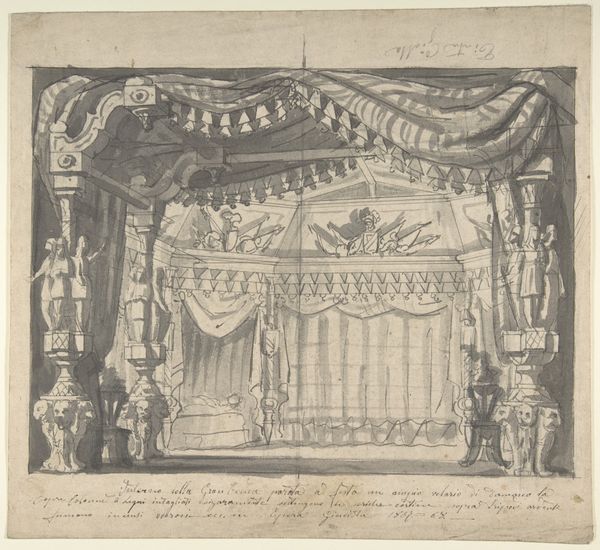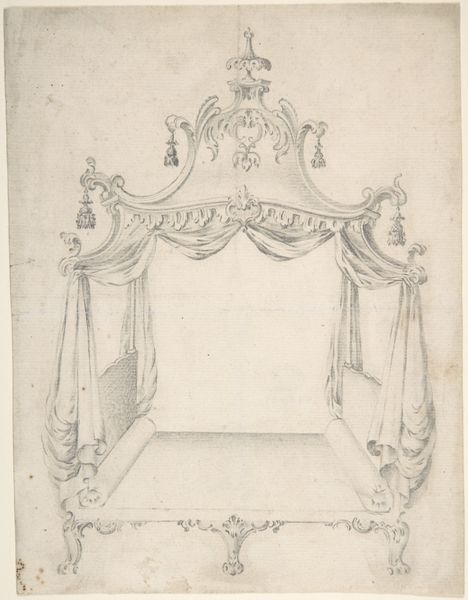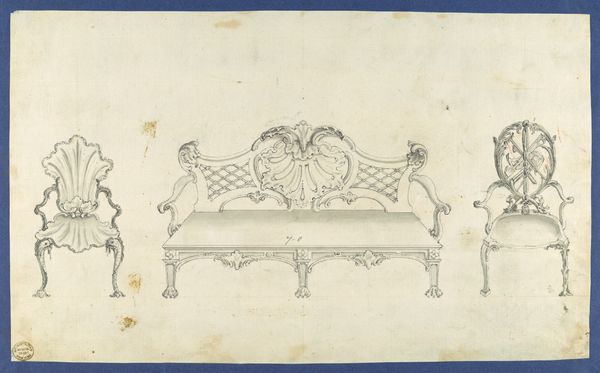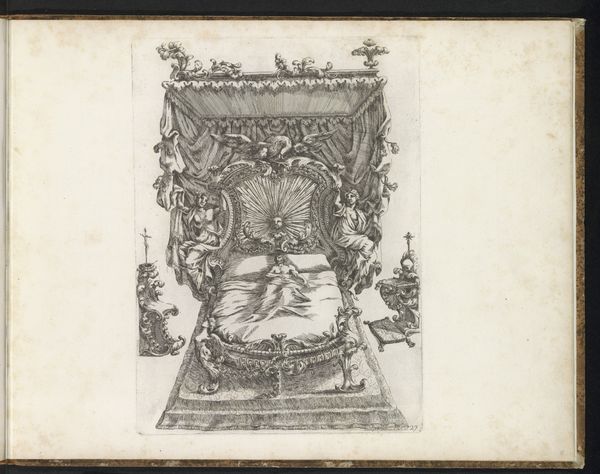
drawing, paper, ink, pencil, architecture
#
drawing
#
baroque
#
pencil sketch
#
paper
#
form
#
ink
#
coloured pencil
#
pen-ink sketch
#
pencil
#
line
#
watercolour illustration
#
history-painting
#
academic-art
#
architecture
Dimensions: height 350 mm, width 450 mm
Copyright: Rijks Museum: Open Domain
Curator: Here we have Filippo Passarini’s “Ontwerp voor een hemelbed,” or "Design for a Four-Poster Bed," dating from 1698. The media include pencil, ink, and watercolor on paper. Editor: It looks quite opulent, if a little claustrophobic. The details are intricate but the rendering feels a bit cold. Is that just the nature of architectural design, or something specific to the Baroque era? Curator: Well, the Baroque certainly embraced elaborate ornamentation. The design overflows with symbolic meaning—note the angels adorning the canopy, likely representing spiritual protection and divine dreams. The sphinxes at the foot evoke ancient wisdom and guardianship, a very classicist appropriation. Even the very fabric and detailing express a very specific type of social ritual! Editor: And what about the labor required to bring this vision to life? Just imagine the countless hours artisans would invest carving the wooden frame, weaving the textiles, and embroidering the details! Consider the socioeconomic stratification embedded in this single object; an expression of luxury bought with exploitation. Curator: Precisely! This design represents far more than mere shelter. The bed itself functions almost as a stage, a focal point for important life events from birth to death. Its elevated and enclosed structure signals status, privilege and even the ritual of presentation! The materials alone... Editor: Gold thread, fine silks, rare dyes… materials sourced through extensive trade networks and fashioned by skilled hands. The consumption involved is breath taking. We must also consider how tastes changed and such opulent designs moved out of favour. Where are all of these ornate beds now? Curator: An important question. Perhaps dismantled, repurposed, or relegated to storage...their stories fade with time. But images such as this, and all its accompanying symbolic echoes, keep their history alive for us to reinterpret in the now. Editor: Yes, from the trees felled to build the bed frame to the present moment we interpret this piece in, history’s presence remains indelible.
Comments
No comments
Be the first to comment and join the conversation on the ultimate creative platform.
